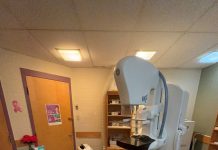According to the 2024 ParticipACTION Report Card on Physical Activity for Children and Youth, 61 percent of Canadian kids aged five to 17 are not getting the recommended 60 minutes of daily moderate to vigorous physical activity. This is important for their growth and development. As families settle into the new school year and the seasons change, the Simcoe Muskoka District Health Unit is sharing tips to help young people get the physical activity they need to be healthy.
“We know that physical activity and overall health are closely linked,” says Christine Bushey, manager of the Simcoe Muskoka District Health Unit’s Chronic Disease Prevention Program. “Physical activity is important for children and teens, and the benefits include stronger bones and muscles, better brain, heart and lung health. This improves their mental, emotional and social well-being, all of which can help them be better able to learn while in school.”
Busy schedules, being unsure of ways to start building physical activity into your day and changing weather can be barriers to physical activity. Fortunately, there are ways to work around these concerns and build more activity into your family’s routine.
Find opportunities for active school travel
Encouraging kids to walk or wheel to the places they need to go becomes a healthy habit that can last a lifetime and is one of the easiest ways for school-aged children to get regular daily physical activity. Choosing active ways to get to school also helps to reduce the number of cars in school zones which helps to decrease traffic congestion and improve safety in school zones. It can also help to reduce harmful air pollution. Learn more about the Simcoe Muskoka On the Move active school travel initiative.
Enjoy more time in nature
Making outdoor play a part of kid’s after-school routine helps them stay active. Parks, forests, meadows and gardens are spaces that encourage a variety of play, such as exploring paths, climbing hills and balancing on logs. These natural spaces can also provide shade and create cooler, more comfortable places to be. Learn more about staying active after the school day ends.
Take a break from sitting
Everyone benefits from sitting less and moving more. Children and teens should spend less than two hours a day using or watching screens when it’s not for schoolwork. Create a family media plan that sets limits on screen time, prioritizes screen-free family time, removes screens from bedrooms, and finds alternative activities to encourage movement indoors when the weather keeps you indoors.
Make movement a family activity
After school and on weekends, choose activities that get the whole family moving. Whether it’s an active indoor game on a rainy day or a hike on a sunny afternoon, family activities promote movement, social connectedness, and attachment, all of which are important for physical and mental health. Children are more likely to be active if their parents and caregivers enjoy being physically active. Learn more about active play and how everyone can benefit.
To learn more, visit smdhu.org/PhysicalActivity or call Health Connection on weekdays from 8:30 a.m. to 4:30 p.m. at 705-721-7520 or 1-877-721-7520.








